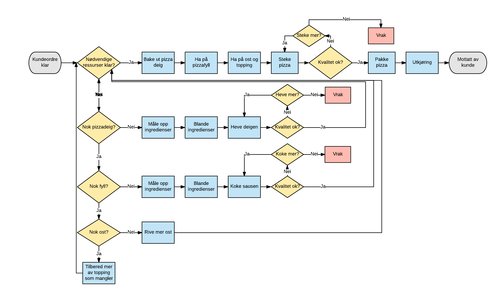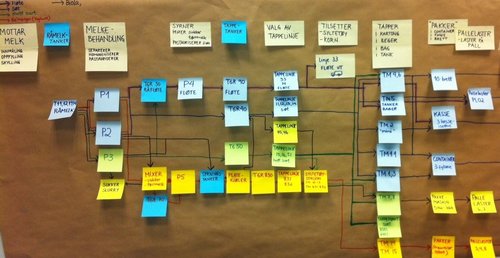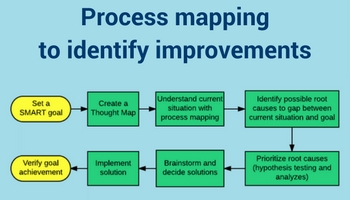
I was very impressed with Sissel's Lean Six Sigma knowledge. She makes it easy to identify improvements and create results.


«A bad process will beat a good person every time» - W. Edwards Deming
How well do your processes flow? Are your activities value-adding? Is the process performed the same way every time?
To improve a process, we first need to understand it. Process mapping helps visualize and analyze processes as they actually work, making it an essential tool for process improvement.
Process maps visually illustrate how activities connect to achieve a result. They are used for formal documentation, process improvement, and designing new processes.
Commonly, symbols and color codes are used to clarify activity types. Various process maps serve different purposes, but they all help individuals understand their roles and interactions within the bigger picture.
An inefficient process will yield poor results, no matter how skilled the people executing it are.
Process mapping provides insight into workflow, highlights improvements, and clarifies roles.
Benefits:
Learn how to map and optimize processes using various process mapping techniques. Sign up for our Value Stream Mapping course today!
To ensure accuracy, observe the actual process ("Go to Gemba") and involve those performing the tasks. Ask questions and verify the workflow.
«Flow charts should be as simple as possible, but not simpler» - Albert Einstein
There are many types of process maps, each suited for different purposes. Here are some examples:
Which process map is best suited for your needs?
We help businesses implement effective process mapping. Contact us for more information!
Lean Tech AS | Kristoffer Robins vei 13
0047 481 23 070
Oslo, Norway
L - Look for solutions
E – Enthusiastic
A – Analytical
N - Never give up


